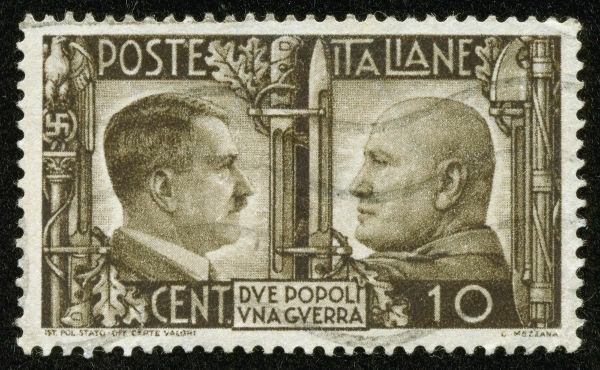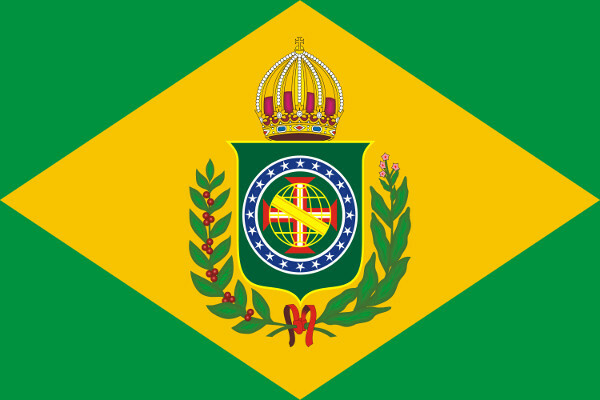O fascism is understood by political scientists and historians as the radical form of expression of the political spectrum of the conservative right. However, it is important to say that not every policy practiced by the conservative right is extremist like fascism. This idea is also valid for the political spectrum of the left, since not every policy practiced by it is radicalized as what was seen by Stalinism, the totalitarian regime led by Joseph Stalin, between 1927 and 1953, in the Soviet Union.
Also access:Was Nazism a right-wing or a left-wing movement?
After all, what is fascism?
O fascism is a concept that generates a lot of debate for its complexity, since it is a political movement that adapts to different circumstances and appropriates ideals from different ideologies. In any case, fascism, as a political and social movement, has a rhetoricpopulist which explores issues such as the nation's endemic corruption, economic crises or the “decline of traditional and moral values” of society. In addition, it argues that radical changes in
status quo (Latin expression to refer to “the current state of affairs”) must happen.
Hitler and Mussolini are understood to be leaders of the two great fascist movements of the 20th century: the German and the Italian, respectively.**
Once it occupies spaces of power, fascism turns into an extremely authoritarian, based on social exclusion, therefore, hierarchical is enough elitist. The term “fascism” can be used to refer to:
1. To the fascism that emerged in Italy and led by BenitoMussolini.
2. To the extreme expression of fascism under the ideology Nazi, developed by adolf hitler.
3. To the regimes that emerged during the period between the First World War and the Second, ideologically inspired by Italian fascism, such as the cases of salazarism, in Portugal, of the Francoism, in Spain, of the movement Ustasha, in Croatia etc.
Characteristics of Fascism
Classical fascism, as Italian fascism is known among historians, had some characteristics:
1. Implementation of a one-party system or one-party party, in which only the fascist party itself had the right to act in the national political system;
2. Worship to the boss/leader as a way to place him as the only person capable of guiding the nation to its destiny;
3. Contempt for liberal values, which include individual freedoms and representative democracy;
4. Contempt for collectivist values, like socialism, communism and anarchism;
5. Wish of imperialist expansion based on the idea of domination by weaker peoples;
6. Victimization of certain groups in society or of a people with the aim of initiating a persecution against those who were seen as “enemies of the people”;
7. Use of rhetoric against traditional political methods asserting that they were incapable of fighting crises and bringing the nation to prosperity;
8. Exaltation of "traditional values" to the detriment of values considered “modern”;
9. Mobilization of the masses;
10. Total control of the fascist state on issues related to economics, politics and culture.
Read too: Totalitarianism - origin, examples, characteristics
What was Italian fascism?
The expression “fascism” was coined by the Italian BenitoMussolini (1883-1945), who created, in 1919, an organization called Fasci Italiani di Combattimento. The term “fasci”, which means bundle, refers to the bundle of wooden poles with an ax in the center – symbol of the unity of political power in the Ancient Rome.
Mussolini began his political career in an Italian socialist nucleus. Mussolini's link with Italian socialism was broken in 1914 when he published an article in a socialist newspaper defending Italy's participation in the First World War. This break happened because the Italian socialists were radically against the country's entry into the war.

Benito Mussolini was the founder of Fasci Italiani di Combattimento, the group that gave rise to the National Fascist Party.***
Mussolini, then, aligned his political discourse with the Italian nationalist bias. Between 1919 and 1920, the political strengthening of socialist-oriented movements led conservative classes in Italy to align themselves with Italian fascism. Fassimus gained a lot of strength in rural regions of central Italy.
In this context, from the organization Fasci Italiani di Combattimento, came the BrokenNationalFascist. The main objective was to seize power in Italy both through elections and through violent acts against opponents. The use of violence by the fascists even came to be praised by certain classes of Italian society who saw aggressiveness as a way of weakening the socialists.
Mussolini came to power in 1922 after members of the National Fascist Party carried out the call marchaboutPomegranate. This march took place on October 28, 1922. In it, fascists from all over Italy marched towards Rome, the country's capital, to pressure the then king, Victor Emanuel III, to swear in Mussolini as his head of state (or prime minister). Many fascists counted on government support to reach the Italian capital.
The result of the March on Rome was that the king deposed the sworn prime minister and called on Benito Mussolini to form the basis of the new government, now under the control of the fascists. Royalists and right-wing conservatives celebrated Mussolini's inauguration, liberals accepted the situation, and socialists were opposed, however, they did not have the strength to control the growth of the fascism. Over time, Mussolini managed to control the entire Italian state.
The National Fascist Party devised a strong state model, in which executive power was centralized and the figure of the leader, the duce (in Italian), indisputable. Mussolini's cult of personality became one of the main features of Italian fascism. This veneration of the head of state also spread to other countries in Europe and to other continents at that time.
This inspiration gave rise to movements that are known among historians (and already mentioned in this text) as “Spanish fascism”, in the case of Francisco Franco; “Portuguese fascism”, in the case of António de Oliveira Salazar; and “German fascism” in the case of Adolf Hitler's Nazism.
Read too:Adolf Hitler: all about the story of the leader of Nazism
neo-fascim
Currently, the term "neo-fascist” as a reference to political regimes that have characteristics similar to those of traditional fascisms (Italian, German, Spanish, Portuguese, etc.), but that have certain ideological differences. These differences are due to the context of development of neo-fascism, which is completely different from the context of fascisms in the interwar period. The link, therefore, is the ideological approximation between classical fascism and neo-fascisms.
The characteristics of "neo-fascism" are:
1. Chauvinism: exaggerated patriotism that often takes violent and xenophobic postures.
2. contempt for liberal democracy: despite this, neo-fascism does not build extremely closed and totalitarian regimes as in the case of Italian fascism. In neo-fascism, regimes with a democratic air can be built, including elections. However, the authoritarian and indoctrinating action of the regime is aimed at manipulating the masses as a way to serve fascist interests.
3. anti-people measures: the idea of “external enemy” of fascism became “internal enemy” in neo-fascism. Thus, internal groups can be seen as enemies, and measures against them are taken as a way to combat political opposition and the debate of ideas.
Read too: Neonazism: what it is, origin, ideology, occurrence in Brazil
Summary
O fascism it was a movement that emerged in Italy in the 1910s and came to power in that country in the 1920s, more precisely in 1922. The rise of fascism in Italy is directly related to the economic crisis that the country experienced. Furthermore, it is related to the Italian frustration with the First World War and with the fear of the expansion of socialism in the country.
The leader of Italian fascism was BenitoMussolini, a politician who started his career in socialist movements, but who, throughout the 1910s, was aligning his speech to nationalist agendas that pleased and brought him closer to conservatism Italian. Its popularization was due to the use of violence to repress socialist groups.
The term “fascism” can be used to refer specifically to Italian fascism, but historians extend its use to other regimes of that time, such as the German Nazism, a Croatian Ustasha, O Spanish Francoism, etc. Currently, there is also use of the term "neo-fascism” to refer to today's political movements that have ideological approaches to fascism.
______________________
*Image credit: Everett Historical / Shutterstock
**Image credit: with God / Shutterstock
***Image credit: Olga Popova / Shutterstock
By Daniel Neves Silva (Historian)
Cláudio Fernandes (Master in History)
Source: Brazil School - https://brasilescola.uol.com.br/o-que-e/historia/o-que-e-fascismo.htm


